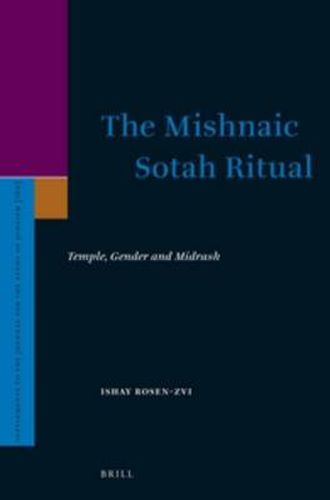Readings Newsletter
Become a Readings Member to make your shopping experience even easier.
Sign in or sign up for free!
You’re not far away from qualifying for FREE standard shipping within Australia
You’ve qualified for FREE standard shipping within Australia
The cart is loading…






This study analyzes the specific textual formation of Mishna Sotah. Diverging significantly from its origins in the book of Numbers, the Mishnaic ritual was traditionally read by scholars as an ancient Mishna , narrating an actual ritual practiced in the second temple. In contrast to this generally accepted view, this book claims that while Sotah does contain some traditions, its overall composition has a clear ideological and academic form. Furthermore, comparisons with parallel Tannaitic sources reveal the ideological redaction, which carefully selected only those opinions which support its rewriting of the ritual as a public punitive ritual, while rejecting all reservations and opposition to its specific punitive character - even ignoring the possibility of innocence of the suspected adulteress. The author’s groundbreaking conclusion is that, regardless of the form the real ritual did or did not take at the temple, the specific Mishnaic ritual was (re)invented by the rabbis in the second century C.E. From its very inception, it was purely textual, reflecting rabbinic imagination rather than memory.
$9.00 standard shipping within Australia
FREE standard shipping within Australia for orders over $100.00
Express & International shipping calculated at checkout
This study analyzes the specific textual formation of Mishna Sotah. Diverging significantly from its origins in the book of Numbers, the Mishnaic ritual was traditionally read by scholars as an ancient Mishna , narrating an actual ritual practiced in the second temple. In contrast to this generally accepted view, this book claims that while Sotah does contain some traditions, its overall composition has a clear ideological and academic form. Furthermore, comparisons with parallel Tannaitic sources reveal the ideological redaction, which carefully selected only those opinions which support its rewriting of the ritual as a public punitive ritual, while rejecting all reservations and opposition to its specific punitive character - even ignoring the possibility of innocence of the suspected adulteress. The author’s groundbreaking conclusion is that, regardless of the form the real ritual did or did not take at the temple, the specific Mishnaic ritual was (re)invented by the rabbis in the second century C.E. From its very inception, it was purely textual, reflecting rabbinic imagination rather than memory.